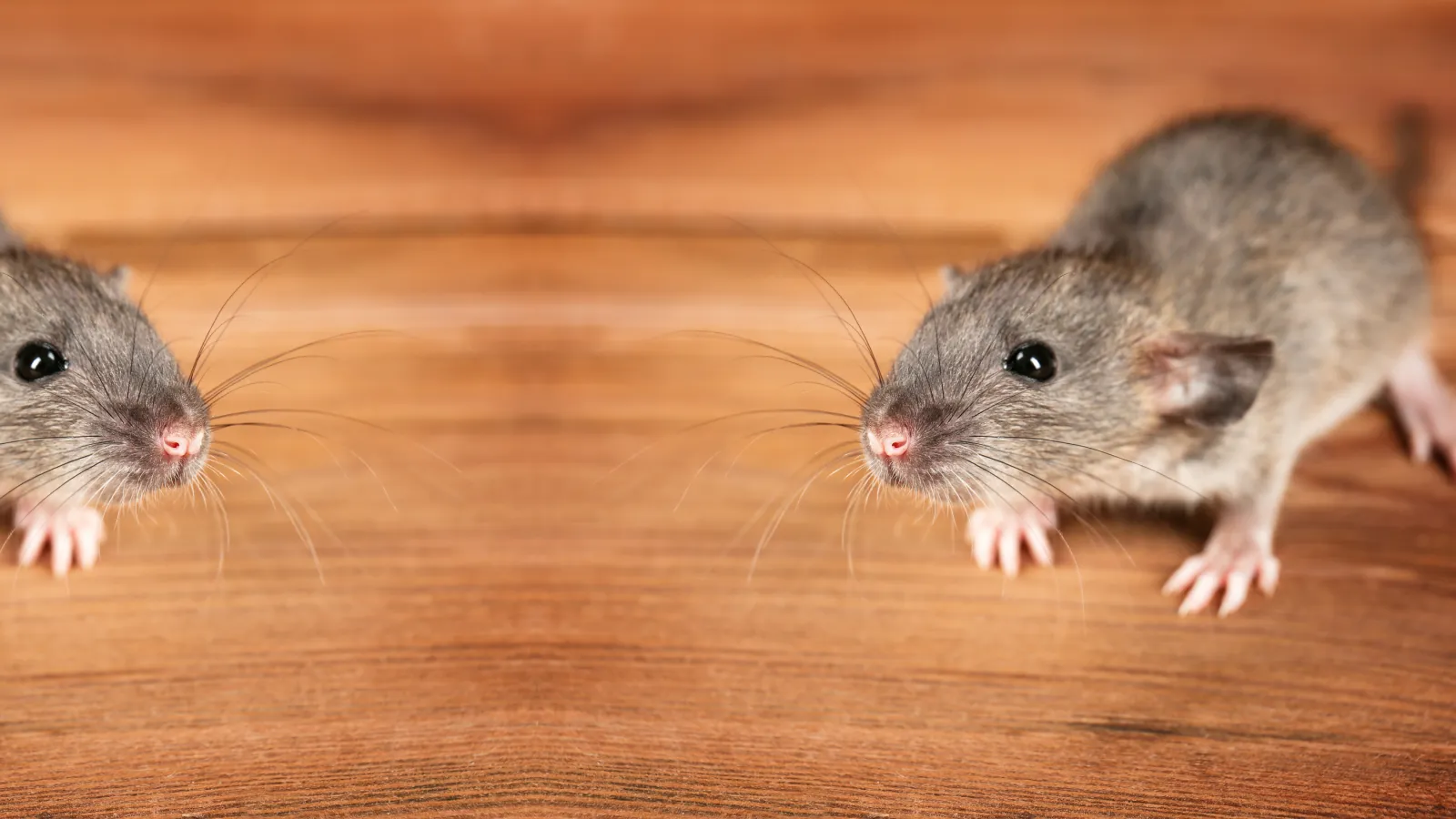
House Mice
Latin Name: Mus musculus
Your average house mouse is considered a wild animal characterized by the order Rodentia but primarily inhabits where humans are mostly present. They tend to be about 10 cm long and vary in color from very light brown to black. Large quantities of mice can populate quickly as a female produces around 5 to 10 litters per year, and each litter reaches adulthood in about 6 to 8 weeks.
Mice in the home tend to set up camp in walls, attics, crawl spaces, and even insulation, making them hard to eliminate. These creatures are known as scavengers, typically feeding on leftover crumbs. However, they can also gnaw through water and plumbing lines, chew through screens, and frequent kitchen cabinets. This poses a significant concern as house mice can carry diseases like hantavirus, salmonella, or lymphocytic choriomeningitis (LCMV) that can be transmitted to humans. You can be exposed to these diseases by direct or indirect contact which could include cleaning up the dead mice, droppings, or if the mice have come in contact with your food. All diseases can cause serious illness among humans and require immediate medical attention.
If you have a mouse infestation, it is essential to call a professional to take care of the problem to prevent the spread of diseases the mice in your home could be carrying. Signs that you have a mice infestation include droppings, urine odor, gnawed holes, rodent nests, and scampering noises. It's important to note that good sanitation won't get rid of mice, but it is a great way to prevent luring them into your home, as poor sanitation will attract them. Make sure to clean after preparing meals, avoid food outside the kitchen, and reduce dish piling in the sink.
Similar Pests: Roof Rat